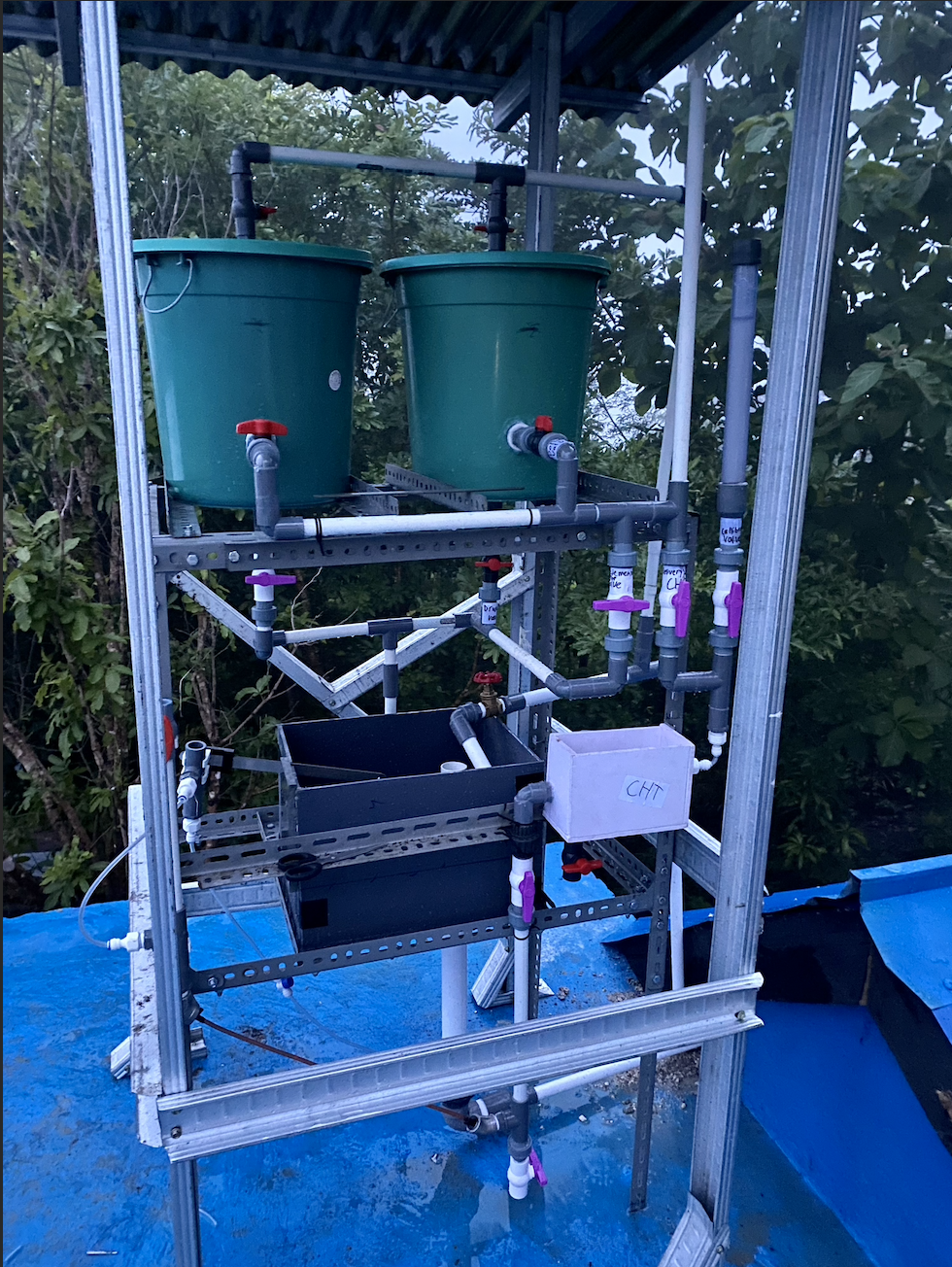With a population of over 277 million, the fourth most populous in the world, Indonesia is dealing with a profound shortage of clean water.
UNICEF reports that 70% of household drinking water is contaminated with fecal matter, while Indonesia’s Ministry of Energy and Mineral Resources records that 80% of ground water in Jakarta, the country’s capital, is contaminated with E.Coli.
Since 2021, Austin Ho (a then-senior at high school in Jakarta) has been working with AguaClara Reach to lead Hydrodoser installations in Indonesia. The Hydrodoser is AguaClara Reach’s standalone and gravity-powered chemical dosing system. The Hydrodoser can be used for chlorine dosing and water disinfection and useful for communities that have low turbidity water sources. Two years and three Hydrodoser builds later, we are celebrating that thousands of Indonesians in remote communities now have access to safe drinking water.
Austin Ho (left) and Dr. Monroe Weber-Shirk (right) meet for the first time in person in Ithaca, NY in 2021.
Austin led the installation of three Hydrodosers and worked in partnership with local non-governmental organizations (NGOs). The most recent build was completed in June of 2023 while partnering with USAID IUWASH Tangguh in the Magelang Regency. This pilot build has since been inaugurated by USAID’s Mission Director Mr. Jeffrey Cohen and Indonesia’s Ministry of National Development Planning. During the inaugration celebration, everyone drank water from the new Hydrodoser.
USAID Inauguration of Hydrodosers in June 2023.
Community celebration at Hydrodoser Inauguration in June 2023.
The Hydrodoser can treat up 1 Liters per second (15.8 gallons per minute) of flow. Chlorine is added to a 50-Liter chemical stock tank and is dispensed based on the flow rate through the Hydrodoser. During Hydrodoser startup and testing, the free chlorine levels at each house in the delivery zone ranged between 0.1 to 0.3 parts per million, meeting the national standards. Residents were delighted with the results: the water remained odorless and each household will pay less than $1/month for the maintenance of the system.
In early 2022, Austin also led Hydrodoser projects for two communities in the town of Karawang, a two-hour drive from the capital Jakarta. These projects were in partnership with Habitat for Humanity and were sponsored by Amazon Web Services.
The Hydrodoser installation team in Karawang.
The first Hydrodoser in Karawang in partnership with Habitat for Humanity and funded by Amazon Web Services.
Startup and testing of the first Hydrodoser in Karawang showed that the system effectively brought water containing 960 colonies of Coliform and 250 of E.Coli per Liter down to zero.
Untreated water quality results tested by a local clinic. E. Coli and Coliforms recorded per 100ml.
Hydrodoser-treated water quality results tested by a local clinic. E. Coli and Coliforms recorded per 100ml.
The second Hydrodoser was built nearby the first community in Karawang, which had a similar flow rate. Like the first Hydrodoser in Karawang, the second Hydrodoser reduced the community’s 360 colonies of Coliforms to reported results of zero.
The second Hydrodoser in Karawang.
The Hydrodosers were able to accurately dose chlorine to the drinking water source, providing a technical solution for the contaminated water problem. However, successful projects also require working with the local community for education and outreach efforts. Community members in Karawang were hesitant to drink chlorinated water, and one of the main issues was that there was no visible different in the water pre- and post-treatment.
Austin came up with a creative solution to visually demonstrate the presence of E. Coli in the untreated water. He used a Hydrogen Sulfide Test, a bottle containing a strip made of iron and sulfur compounds. E. Coli present in water samples added to the test bottle reduces sulfur and produces black ferric sulfide. During testing and community education activities, the raw (unchlorinated) water turned black, and the Hydrodoser-treated (chlorinated) water remained clear (the strip is yellow). This demonstration, along with a low dosage point of 2 parts per million of chlorine to minimize odor, made the build successful.
Hydrogen Sulfide Test bottles used for community education activities. Black samples (bottles 1, 3, and 5 from the left) show presence of sulfur-reducing E. Coli, corresponding with untreated water. Yellow samples (bottles 2, 4, and 6 from the left) show no sulfur-reducing E. Coli, corresponding with Hydrodoser-treated water.
With the great success of these three Hydrodoser projects, there are plans to continue working with USAID to expand treatment nationwide. These efforts are sponsored by Regional government institutions (Pemda) and Regional water companies (PDAM). The results of USAID’s work will serve as input for the Minister of Public Works and Housing “to develop and update technical guidelines related to chlorination,” essentially creating policies and regulations for Hydrodoser implementation communities all across Indonesia that are too remote to be served by public waterworks.
AguaClara Reach is so excited to have Austin Ho as a partner and advocate for safe water on tap. Thank you to Austin, Habitat for Humanity, USAID, AWS, Pemda, PDAM, and the Ministry of National Development Planning.









